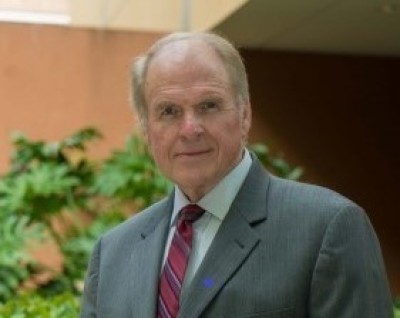Building the post-pandemic church: Providential plagues (part 2)
Editor's Note: This article is the second in a series on the post-pandemic church. To read part one "Building the post-pandemic church: Out of ashes (part 1)," click here.
Five thousand people died daily in the pandemic.
Perhaps it was Ebola or smallpox, or even a wicked strain of influenza, like the coronavirus. Whatever it was, not only did the disease produce staggering death tolls, but the national government was thrown into chaos when a pandemic scoured the Roman Empire and much of its world in 249 AD. Rome had barely gotten over a ravishing plague from 165-180 AD, and, less than a century later, here it was again.
By the time it subsided, more than five million were dead.

Emperor Decius was working hard to make Rome great again. The drag into political and military chaos was intense. Civil life itself was increasingly unstable. Huns were pressing in from one direction, Goths from another, and pandemic-sparked terror and anarchy were gutting from within.
On this round, the monstrous disease would linger 13 years, from 249-262.
History would remember it as the “Plague of Cyprian,” associating the pandemic with the Bishop of Carthage, because of his sensitive accounts, like this:
There is nothing remarkable in cherishing merely our own people with the due attentions of love, but that one might become perfect, he who should do something more than heathen men or publicans; overcoming evil with good, and practicing a merciful kindness like that of God, he should love his enemies as well…Thus the good was done to all men, not merely to the household of faith.
History may not repeat itself, but it does rhyme, as Mark Twain reportedly said. So, there is a distinct “rhyme” between what was happening in the age of Cyprian and Decius and our times, as a report from Pontius, Cyprian’s biographer, reveals:
... excessive destruction of a hateful disease invaded every house in succession of the trembling populace, carrying off day by day with abrupt attack numberless people, everyone from his own house... There lay about meanwhile, over the whole city, no longer bodies, but the carcasses of many ... No one regarded anything besides his (own) cruel gains ... No one did to another what he himself wished to experience.[1]
There were no hospitals with sophisticated intensive care units in those days, and no Hazmat suits.
Far away from Rome, Dionysius of Alexandria was also watching what was happening — especially the contrasts between the pagan populations and the Church. He believed the plague was a providential schooling and testing of Christians. And their response was up to the test:
Most of our brother Christians showed unbounded love and loyalty, never sparing themselves and thinking only of one another. Heedless of danger, they took charge of the sick, attending to their every need and ministering to them in Christ, and with them departed this life serenely happy; for they were infected by others with the disease, drawing on themselves the sickness of their neighbors and cheerfully accepting their pains. Many, in nursing and curing others, transferred their death to themselves and died in their stead.[2]
Cyprian thus reported that,
In the pagan empire, the Christian attitude towards the sick and the dying, believers and unbelievers alike, triggered an explosive growth of Christianity. Because of their compassion during the plague, the Christians’ deeds were on everyone’s lips, with admiration and gratitude, and such actions brought many to the Faith.[3]
In more recent times, during the Second World War, Helmut Thielicke, a German theologian and pastor, had to deal with a different kind of onslaught: nightly bombings in the city where he stayed faithfully ministering to people who did not know if they would be alive the next day or not.
Thielicke said this in a sermon: “We do not know what will come. But we know Who will come. And if the last hour belongs to us, we do not need to fear the next minute...”
Churches now are being “schooled” and “tested” for whatever lies ahead in the “next minute” or beyond. We get a hint of the outcome of this “schooling” and “testing” from Cyprian’s description of what happened internally to the Church in his age of pandemic:
... lukewarm (people) are hardened... listless nerved, the sluggish awakened; deserters are compelled to return; heathens brought to believe; the congregation is established; believers are called to rest; fresh and numerous champions are banded in heartier strength for the conflict, and having come into warfare in the season of death, will fight without fear of death, when the battle comes.[4]
Why did churches in Cyprian’s day respond to their suffering, shaky world as they did? It was because they focused on the life and incarnate ministry of the One who holds time and history in His hands — the Lord Jesus Christ.
So now, as in the age of Cyprian and all others who have sought to minister in periods of crisis, the best way to know what Jesus woulddo is to look closely at what Jesus did.
That will “school” us in what to do now in building the post-pandemic church.
That will be the focus in Parts 3 and 4 of this series.
[1] Pontius of Carthage, Life of Cyprian. Transl. Ernest Wallis, c. 1885. Online atChristian Classics Ethereal Library. (As cited at Wikipedia)
[2]https://www.bing.com/search?q=plague+was+providential+schooling+and+testing+for+Christians&form=ANSPH1&refig=2888211e5423461db833995bccea9cff&pc=U531&sp=1&qs=HS&sk=PRES1&sc=8-0&cvid=2888211e5423461db833995bccea9cff
[3]https://sspx.org/en/news-events/news/church-and-plague-early-centuries-part-two-four-56751#:~:text=In%20the%20pagan%20empire%2C%20the%20Christian%20attitude%20towards,and%20such%20actions%20brought%20many%20to%20the%20Faith.
[4]https://fsspx.news/en/news-events/news/church-and-plague-early-centuries-part-two-four-56751https://fsspx.news/en/news-events/news/church-and-plague-early-centuries-part-two-four-56751
Wallace Henley is a former pastor, White House and congressional aide, and author of more than 25 books. His newest is Two Men From Babylon: Nebuchadnezzar, Trump, and the Lord of History, published by Thomas Nelson.





























